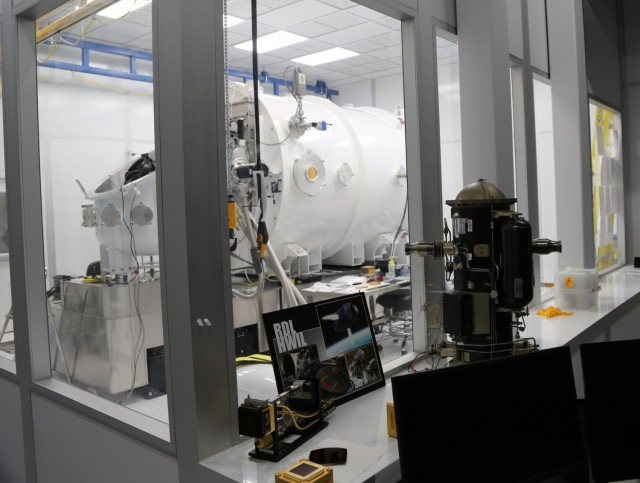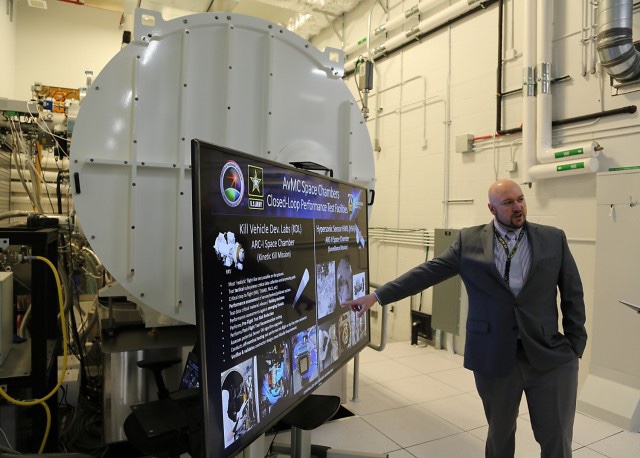
REDSTONE ARSENAL, Ala. — Just exactly how cold is it in space?
The unofficial answer: really cold. The official answer: typically -460 degrees Fahrenheit. So how exactly would you operate a space-based sensor, which needs to detect and track very faint infrared signatures when operating in the cold vacuum of space?
That is where the U.S. Army Combat Capabilities Development Command Aviation & Missile Center’s space-based sensor test facility comes into play. Its two independent space chambers, which operate under the center’s Software, Simulation, Systems Engineering and Integration Directorate, utilize cryogenic refrigeration systems to achieve the required low temperature and pressure environment. The sensor under test is installed within the space chamber, allowing it to observe a multi-spectral target generation source, with all other elements within the chamber conditioned to space-like temperatures and pressures.

“This is the closest you get to a flight test without actually being in space,” said Space Chamber team member David Riesland.
But how exactly would a sensor’s projection system survive and operate within the chamber’s lower temperature/pressure environment? A high-fidelity scene generation system provides radiometrically precise dynamic scenes to the projectors, depicting the threat engagement from the perspective of the sensor field of view. The system presents a TV-like image to the sensor under test, which changes based upon the sensor viewpoint within the simulated battlespace. This allows evaluation of the optical, photon collection, and image processing functions of the sensor under test.
Just because the facility is only two years old doesn’t mean the team gets to rest on its laurels. “We are constantly trying to keep up with the sensors,” said Space Chamber’s Daniel Saylor.
These types of chambers are very rare, which is why it is highly unusual that another space chamber exists down the road at Air Force facilities on Arnold Engineering Development Center in Tullahoma, Tennessee. But there are significant differences.
AvMC’s chambers were specifically designed for Missile Defense Agency testing, including features to extend the operational duration of test events with reduced operational costs. Their state-of-the-art technology allows AvMC’s chambers to heat and cool faster than previous capability increments. They are more limber and can operate for months at a time to allow extended duration testing for large-scale scenario studies.
Just how long of an extended duration?
“We haven’t found the limit yet,” Riesland said.
By Katie Davis Skelley, DEVCOM Aviation & Missile Center Public Affairs

